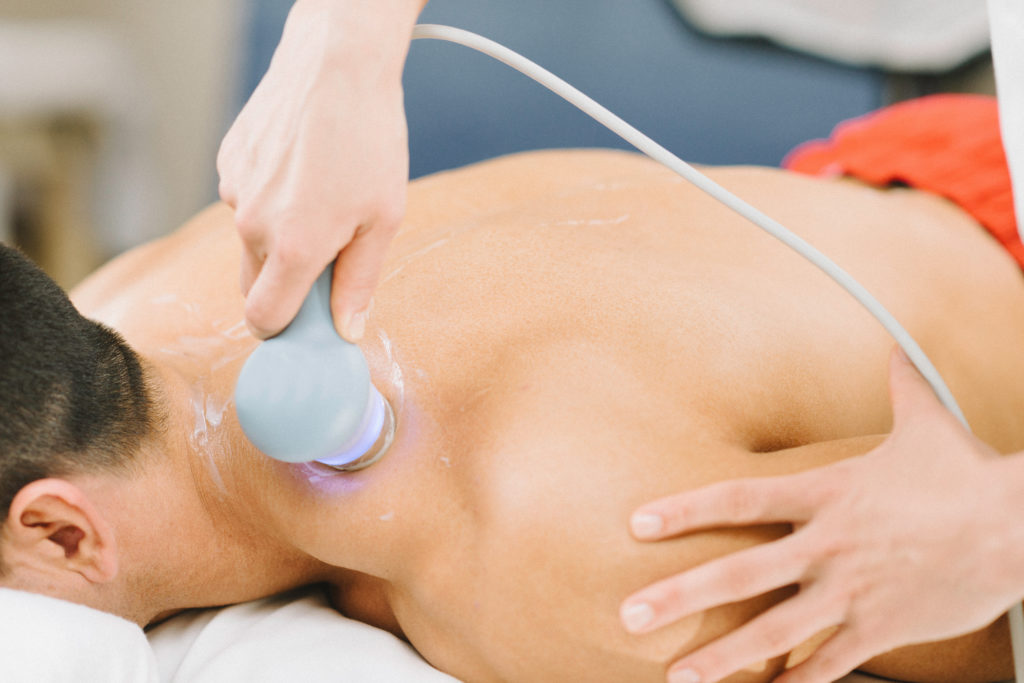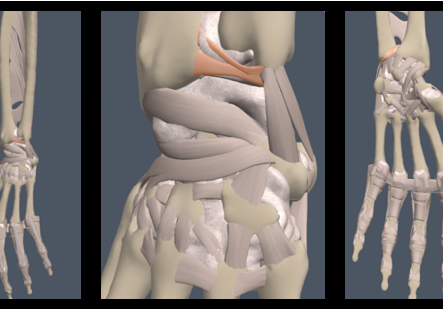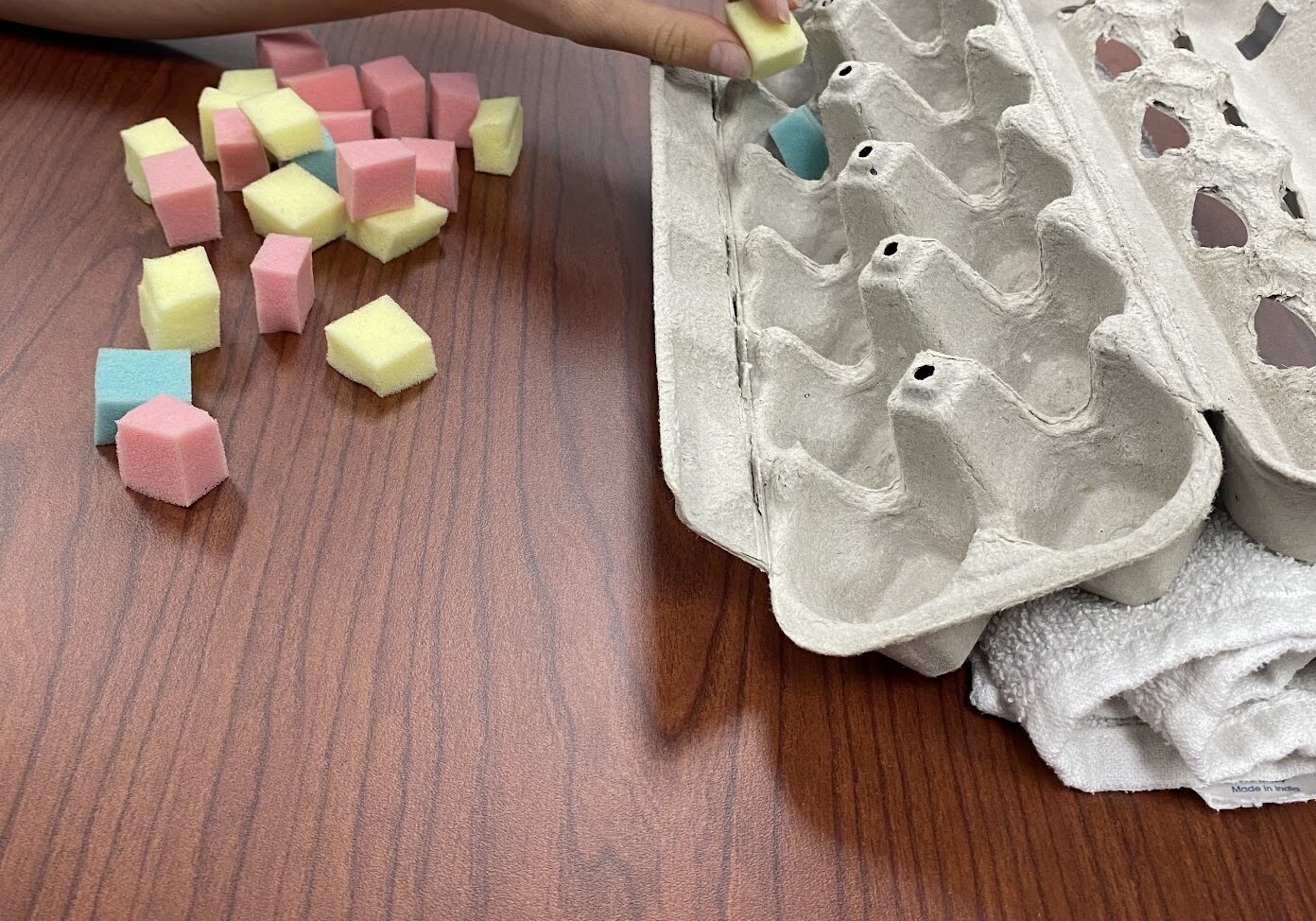Ilter, L., Dilek, B., Batmaz, I., Ulu, M.A., Sariyildiz, M.A., Nas, K., & Cevik, R. (2015). Efficacy of pulsed and continuous therapeutic ultrasound in myofascial pain syndrome: A randomized controlled study. American Journal of Physical Medicine & Rehabilitation, 94(7), 547-554. https://doi.org/10.1097/PHM.0000000000000210
Review by: Megan Prather
The Skinny- Ultrasound hand therapy – ultrasound has been determined as an effective method for use in treatment of myofascial pain syndrome (MPS). Both continuous and pulsed ultrasound have been used with MPS but the two had not previously been compared in a controlled trial. Researchers in this study set out to compare the effects of continuous ultrasound, pulsed ultrasound, and a placebo in MPS to determine best practices for treatment and the use of ultrasound for hand therapy.

In The Weeds- This study was a placebo-controlled, double-blind, randomized controlled trial looking at ultrasound in patients with a diagnosis of MPS with cervicoscapular myofascial pain based on Travell and Simons criteria. Researchers recruited 60 study participants between the ages of 18 and 60 with an active upper trapezius trigger point and pain for at least 1 month who consented to participate. Study participants were divided into one of three groups receiving continuous ultrasound (3 MHz, 1 W/cm2), pulsed ultrasound (3 MHz, 1 W/cm2), or sham ultrasound (machine not on) for 5 minutes 5 days a week for 2 weeks over the painful trigger point. All participants were also instructed in stretching and ROM exercises and received 10 minutes of hot pack treatment. The primary outcome measures for this study were pain at rest and pain with movement. Secondary outcome measures of muscle spasm palpation, psychological state, quality of life, function, and patient satisfaction were also used.
Bringing it Home- Researchers found statistically significant improvement in pain, degree of muscle spasm, neck function, and the Beck Depression Scale quality of life pain subparameter after therapy in all three groups at 6 weeks and 12 weeks after treatment (P<0.05). No significant improvement was found for patient satisfaction or the Beck Depression Scale quality of life social isolation subparameter in any of the groups. Further, in the placebo group no significant improvement was found for the Beck Depression Scale. The group receiving continuous ultrasound showed a statistically significant greater improvement in pain at rest than in either other group (P<0.05). Overall, this study found that continuous ultrasound is better for reducing pain at rest than pulsed ultrasound or placebo in patients with myofascial pain syndrome.

This study was well done and included randomization and blinding of participants into the three groups for clinical comparison. Outcome measures covered a wide range of patient factors and relevant conclusions can be drawn from the data. The smaller participant number and potentially inconsistent exercises done by participants may limit the results. However, these results can positively impact practice and methods used to treat patient pain.
More To Read
DRUJ Instability and Hand Therapy Interventions
DRUJ Instability and Hand Therapy Interventions The distal radial ulnar joint (DRUJ) is the joint consisting of the distal radius and ulna which is held together by the ligamentous structure known as the TFC. DRUJ instability can be acute or chronic in nature. An acute injury is usually addressed by placing the patient in a…
Read MoreBrachial Plexopathy Case Example in Hand Therapy
Brachial Plexopathy Case Example in Hand Therapy (plexopathy examples) One of the recent cases we have seen is a 13-year old with a brachial plexus injury. We are seeing the patient post-surgery for tendon transfers to increase functional use of his left upper extremity (LUE). Before the surgery, he could not extend the wrist and…
Read MoreSensory Processing in People With and Without Tendinopathy
Emilee Sanders, OTS Sensory Processing in People With and Without Tendinopathy: A Systematic Review With Meta-analysis of Local, Regional, and Remote Sites in Upper- and Lower-Limb Conditions Rio, E, Sandler, J., Cheng, K., Moseley, G. L., Cook, J., & Girdwood, M. (2021) Sensory processing in people with and without tendinopathy: A systematic review with meta-analysis…
Read MoreSign-up to Get Updates Straight to Your Inbox!
Sign up with us and we will send you regular blog posts on everything hand therapy, notices every time we upload new videos and tutorials, along with handout, protocols, and other useful information.





